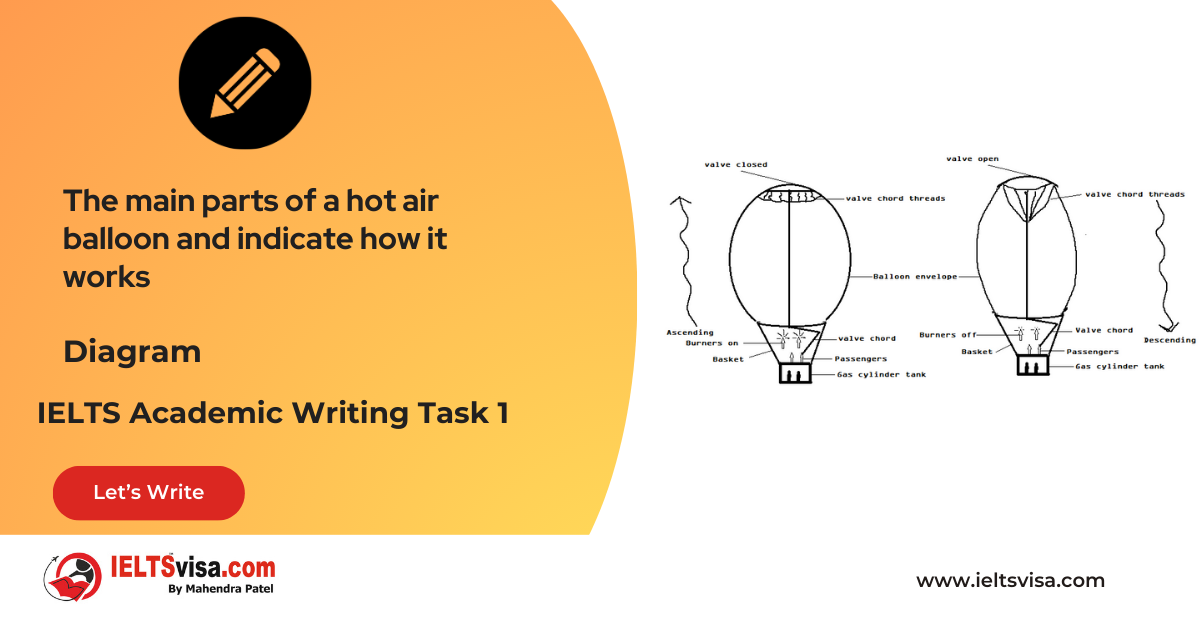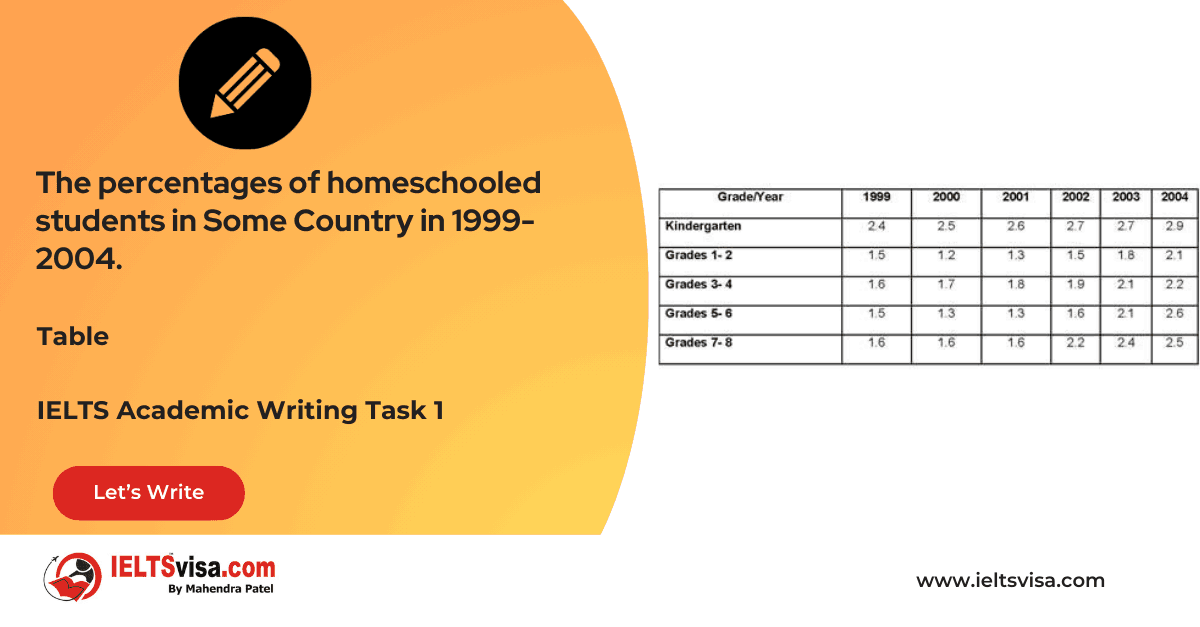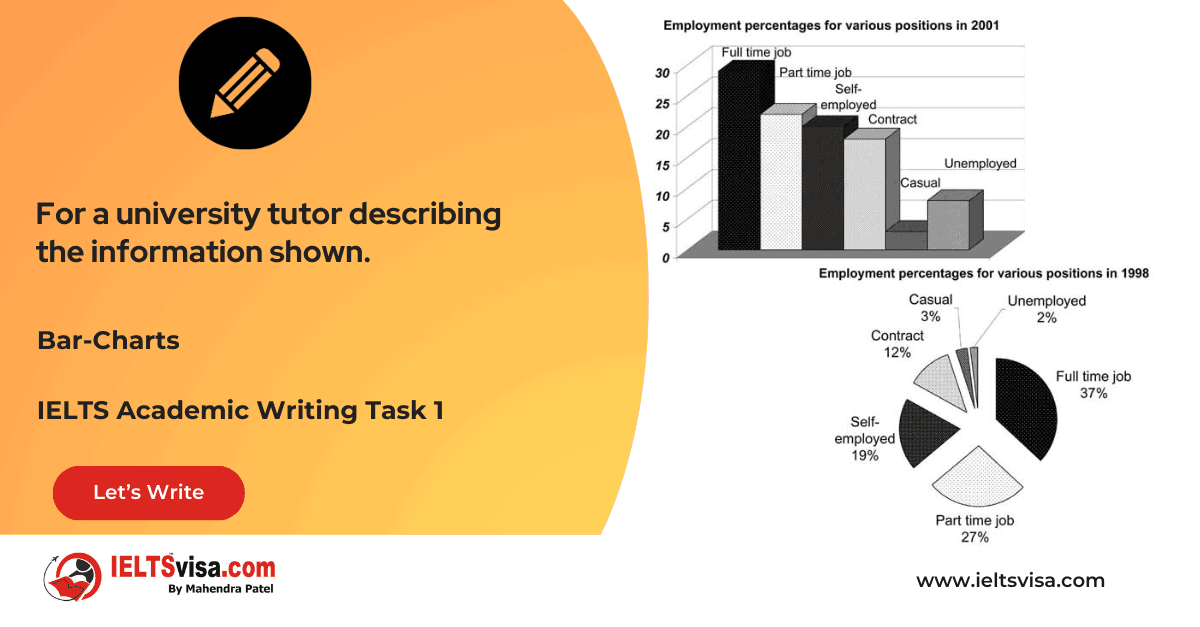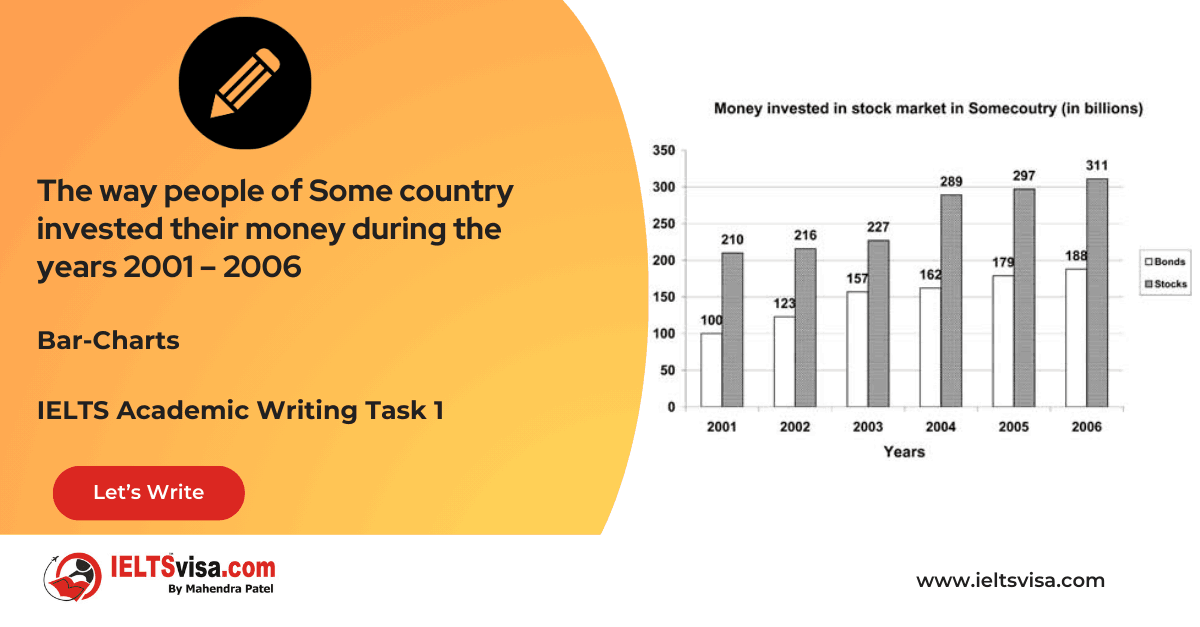Workforce Distribution and Unemployment Rates in Australia (1998-2003)
IELTS Academic Writing Task 1 - Pie Chart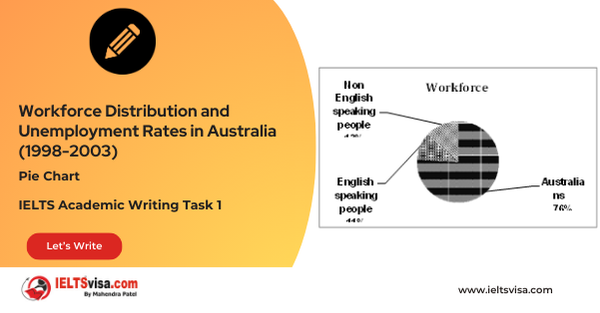
IELTS Writing Task 1 Question
The diagrams below show the categories of workforce in Australia and the unemployment within the three groups. Summarize the information by selecting and reporting the main features and make comparisons where relevant.

Common Questions for the Pie Chart
1. Graph Type: Pie Chart and Line Graph
2. Title: Workforce Distribution and Unemployment Rates in Australia (1998-2003)
3. What are the units of measurement?: Percentage (%)
4. Who: Australian workforce categorized by native Australians, English-speaking non-natives, and non-English speaking individuals
5. When: 1998 to 2003
6. Where: Australia
7. Topic: Distribution of workforce and unemployment rates among different groups
Comparison Showing and Trends
Comparison 1: Workforce Composition
- Details:
- Native Australians: Comprised just over 75% of the total workforce.
- English-speaking Non-natives: Made up about 10% of the workforce.
- Non-English Speaking Individuals: Accounted for 13% of the total workforce.
Comparison 2: Unemployment Rates (1998-2003)
- Details:
- Non-English Speakers: Started with an unemployment rate of 4% in 1998, decreasing to an all-time low of 1% by 2003.
- Native Australians: Experienced a decrease in unemployment from 4% to 2% over the same period, despite a slight rise in 1999.
- English-speaking Non-natives: Had the highest unemployment rate at 8% in 1998, with a gradual decline to 3% by 2003, although their rate fluctuated in the interim.
Overall Comparison
- Details:
- Despite being the smallest group in terms of workforce percentage, the non-English speaking workers exhibited the lowest unemployment rates by 2003.
- In contrast, English-speaking non-natives faced the highest unemployment, reflecting economic challenges within that group.
Sample Answer
The pie chart and line graph provide an overview of the workforce distribution in Australia and the corresponding unemployment rates among three distinct groups from 1998 to 2003.
According to the pie chart, native Australians comprised slightly over 75% of the workforce, English-speaking non-natives represented around 10%, and non-English-speaking individuals accounted for 13%. This distribution highlights the dominant presence of native Australians in the workforce.
The line graph illustrates the unemployment trends for these groups. Non-English speakers had an initial unemployment rate of 4% in 1998, which steadily decreased to a record low of 1% by 2003. Similarly, native Australians saw their unemployment rates decline from 4% to 2% during this period, although they experienced a minor spike in 1999. In stark contrast, English-speaking non-natives faced the highest unemployment rate of 8% in 1998. Despite a gradual reduction to 3% by 2003, their unemployment rate fluctuated significantly over the years.
Overall, the data indicates that while non-English speaking workers constituted the smallest share of the workforce, they enjoyed the lowest unemployment rates, whereas English-speaking non-natives experienced the highest unemployment throughout the period.
Top 29 Vocabularies
| Vocabulary (type) | Meaning | Synonyms | Examples |
| Illustrate (verb) | To explain or clarify through visual means | Demonstrate, show | “The graphs illustrate workforce trends in Australia.” |
| Composition (noun) | The makeup or arrangement of parts | Structure, configuration | “The workforce composition reveals significant disparities.” |
| Unemployment (noun) | The state of being without a job | Joblessness, redundancy | “Unemployment rates varied among different workforce groups.” |
| Fluctuate (verb) | To change or vary irregularly | Oscillate, vary | “The unemployment rate fluctuated during the years.” |
| Account for (phrase) | To constitute or comprise | Make up, represent | “Non-English speakers account for 13% of the workforce.” |
| Overview (noun) | A general summary or outline | Summary, synopsis | “The report provides an overview of employment trends.” |
| Distribution (noun) | The way something is shared or spread out | Allocation, dispersion | “The distribution of the workforce is dominated by natives.” |
| Corresponding (adj.) | Related to or in agreement with something | Equivalent, matching | “The unemployment rates correspond to different workforce groups.” |
| Dominant (adj.) | Having the most influence or prevalence | Leading, prevailing | “Native Australians hold a dominant position in the workforce.” |
| Highlight (verb) | To emphasize or draw attention to something | Emphasize, underscore | “The data highlights the disparities in employment rates.” |
| Trend (noun) | A general direction in which something changes | Pattern, movement | “The line graph shows unemployment trends over the years.” |
| Decline (verb/noun) | To decrease or reduce | Decrease, drop | “The unemployment rate declined over the years.” |
| Spike (noun/verb) | A sudden increase in quantity or intensity | Surge, rise | “There was a minor spike in unemployment in 1999.” |
| Contrast (noun/verb) | A noticeable difference between things | Difference, distinction | “The data contrasts unemployment trends among groups.” |
| Steadily (adv.) | In a consistent and gradual manner | Gradually, progressively | “The unemployment rate steadily decreased over time.” |
| Constitute (verb) | To make up or form something | Comprise, compose | “Non-English speakers constitute a small portion of the workforce.” |
| Represent (verb) | To stand for or be an example of something | Symbolize, signify | “English-speaking non-natives represent 10% of the workforce.” |
| Reduction (noun) | The act of making something smaller or less | Decrease, decline | “There was a significant reduction in unemployment rates.” |
| Fluctuation (noun) | Irregular variation or change | Instability, variation | “Employment rates experienced fluctuation throughout the years.” |
| Proportion (noun) | The part of a whole | Ratio, percentage | “A small proportion of the workforce comprises non-English speakers.” |
| Variation (noun) | A change or difference in something | Shift, deviation | “The variation in unemployment rates was notable.” |
| Indicate (verb) | To show or point out | Suggest, demonstrate | “The data indicates an improvement in employment trends.” |
| Significant (adj.) | Important or noteworthy | Substantial, considerable | “There was a significant drop in unemployment rates.” |
| Period (noun) | A length of time | Timeframe, duration | “The graph covers the period from 1998 to 2003.” |
| Accountability (noun) | Responsibility for an outcome | Responsibility, obligation | “The government has accountability for managing unemployment.” |
| Demographic (noun) | A particular group within a population | Population segment | “Each demographic faced different employment challenges.” |
| Fluctuating (adj.) | Changing irregularly | Varying, oscillating | “Fluctuating trends made employment predictions difficult.” |
| Analysis (noun) | A detailed examination of elements | Examination, evaluation | “The analysis of the workforce reveals key trends.” |
| Pattern (noun) | A repeated design or sequence | Trend, cycle | “A pattern emerged in unemployment trends.” |

Our Books
Master IELTS Speaking Part 1
IELTS Writing Task 1 Book
IELTS Writing Task 2 Book
Writing Task 1 Question Types
Practice IELTS Other Modules
IELTS Listening
The IELTS Listening test assesses how well you can understand spoken English in various contexts. It lasts about 30 minutes and is divided into four sections with a total of 40 questions. The listening tasks become increasingly difficult as the test progresses.
IELTS Academic Reading
The IELTS Academic Reading section assesses your ability to understand and interpret a variety of texts in academic settings. It is designed to evaluate a range of reading skills, including skimming for gist, reading for main ideas, reading for detail, understanding inferences, and recognizing a writer's opinions and arguments.
IELTS Speaking
The IELTS Speaking test assesses your ability to communicate in English on everyday topics. It lasts 11-14 minutes and consists of three parts: introduction, cue card, and a discussion based on the cue card topic.
IELTS General Reading
IELTS General Reading tests your ability to understand and interpret various types of texts. Here are some key areas and types of content you can expect to encounter in the reading section, along with tips for effective preparation.
IELTS Academic Writing Task 1
In IELTS Academic Writing Task 1, you are presented with a visual representation of information, such as graphs, charts, tables, or diagrams, and you are required to summarize, compare, or explain the data in your own words.
IELTS General Writing Task 1
In IELTS General Writing Task 1, you are required to write a letter based on a given situation. The letter can be formal, semi-formal, or informal, depending on the prompt. Here’s a breakdown of the key components to include in your letter
IELTS Academic Writing Task 2
In IELTS Academic Writing Task 2, you are required to write an essay in response to a question or topic. Here’s a guide to help you understand the essential elements of this task
IELTS Exam Tips
To succeed in the IELTS exam, practice regularly, familiarize yourself with the test format, improve your vocabulary, develop time management skills, and take mock tests to build confidence.
Grammer for IELTS
Grammar is the foundation of effective communication in English. Understanding tense usage, subject-verb agreement, and sentence structure enhances clarity and coherence in writing and speaking.
Vocabulary for IELTS
Vocabulary plays a crucial role in the IELTS (International English Language Testing System) exam, especially in the Speaking and Writing sections. Here’s an overview of why vocabulary is important and how it impacts your performance
RECENT IELTS SAMPLES QUESTIONS AND ANSWERS
Task 1 – Diagram – A conference hall built in 1981 and planned for 2020
20:00 Start Pause Stop [df_adh_heading title_infix="IELTS Writing Task 1 Question" use_divider="on"...
Task 1 – Table – The percentages of homeschooled students in Some Country in 1999-2004.
20:00 Start Pause Stop [df_adh_heading title_infix="IELTS Writing Task 1 Question" use_divider="on"...
Task 1 – Table – For a university tutor describing the information shown.
20:00 Start Pause Stop [df_adh_heading title_infix="IELTS Writing Task 1 Question" use_divider="on"...
Task 1 – Bar-Charts – The way people of Some country invested their money during the years 2001 – 2006
20:00 Start Pause Stop [df_adh_heading title_infix="IELTS Writing Task 1 Question" use_divider="on"...
Task 1 – Diagram – Rainwater Harvesting and Conversion to Drinking Water in an Australian Town.
20:00 Start Pause Stop [df_adh_heading title_infix="IELTS Writing Task 1 Question" use_divider="on"...
Task 1 – Column graph – Percentage of Young People Enrolled in Universities in 2000 and 2007.
20:00 Start Pause Stop [df_adh_heading title_infix="IELTS Writing Task 1 Question" use_divider="on"...

